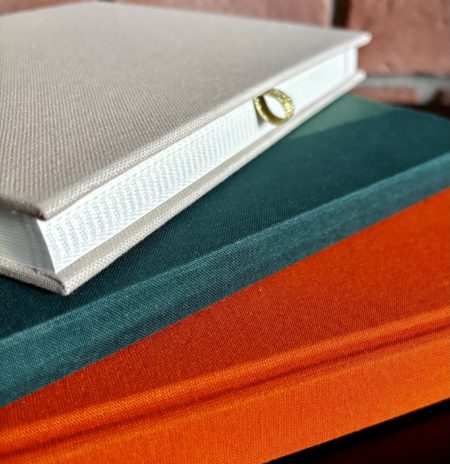If you’re planning to create a book, scrapbook or notebook, you’re sure to be wondering what kind of cloth to choose for hardcover binding. Linen cloth not only adds aesthetics, but also provides durability and protection for your projects. In this article, we will present four key pieces of information about canvas to help you make the best decision.
1. Linen cloths – types
There are many types of linen cloths available on the market. Each of them has its own unique properties that affect the appearance and durability of hardcover binding. Here are some of the most popular types of cloths:
- Cotton cloth: This is one of the most popular options. Cotton cloths are soft to the touch and have a natural look. In addition, they take up colors well, allowing for a variety of visual effects.
- Synthetic cloth: Made from man-made materials, synthetic cloth is more resistant to damage and easier to clean. It’s a great option if you’re looking for something durable and functional.
- Linen cloth: Linen cloth has a unique texture that adds elegance to any setting. Linen cloths are also durable, but may be less stain resistant compared to synthetic cloths.
- Silk cloth: It gives the effect of luxury and elegance. Silk cloth is delicate, but can be prone to scratches. This is an option for those who want their project to really stand out.
Think about the effect you want to achieve, and choose the cloth that best suits your needs.
2. Linen cloth and its properties
Canvas cloths differ not only in material, but also in properties. It is worth noting several key aspects:
- Durability: Cloths should be resistant to mechanical damage and the effects of time. Choose cloths that offer high durability, especially if you plan to use the fixture extensively.
- Moisture protection: Some cloths have additional properties that protect against moisture. This is important if you plan to use the book in areas exposed to water, such as the kitchen or the beach.
- Ease of cleaning: Some materials, like synthetic cloths, are easy to clean. Consider how often you will need to care for your binding. Choose a cloth that won’t give you extra trouble.
- Eco-friendliness: More and more people are paying attention to the eco-friendly aspects of the products they choose. If this is important to you, look for cloths made from natural materials or those that are environmentally friendly.
The properties of linen cloths have a huge impact on the use and aesthetics of your hardcover. It is a good idea to pay attention to them before making a choice.
3. Colors and patterns – your options
Linen cloths offer great possibilities in terms of colors and patterns. You can choose a solid color that will harmonize with the overall design, or opt for more distinctive patterns.
- Solid colors: Often chosen by those who prefer a classic and elegant look. Uniform cloths are easy to match with other design elements. It’s worth paying attention to the shades that will match your brand or style.
- Designs: If you want your setting to be more creative, go for cloths with patterns. You can find cloths in a variety of patterns, from classic to modern. Patterns can add character and make your binding look unique.
Don’t be afraid to experiment with colors and patterns! It’s your business card, so let it reflect your personality and style.
4. Linen cloth application techniques
Once you have chosen the right cloth, it is important to apply it well. The application technique affects the final effect and durability of the hardcover binding. Here are some popular methods:
- Hand application: If you have experience working with materials, you can try applying the cloth yourself. Make sure you have all the necessary tools and carefully measure the material before cutting.
- Cold application: This is a method that uses a special adhesive to adhere the cloth to the surface. It’s a quick way, but requires precision to avoid air bubbles.
- Hot application: This involves using a heated glue that adheres better to the material. This method provides better adhesion, but requires some skill and the right equipment.
- Outsource to a professional: If you don’t feel confident in cloth application, it’s worth outsourcing the task to a professional printer. This way you can be sure that everything will be done carefully and according to your expectations.
Summary
Canvas cloths for hardcover binding are an excellent way to give your projects a unique touch. Choosing the right type of cloth, paying attention to its properties, colors and patterns, and using the right application technique are key aspects that affect the final result.
Remember that your framing is not only a functional element, but also an expression of your creativity and individuality. Choose the cloth that best reflects your style and make your designs eye-catching!





